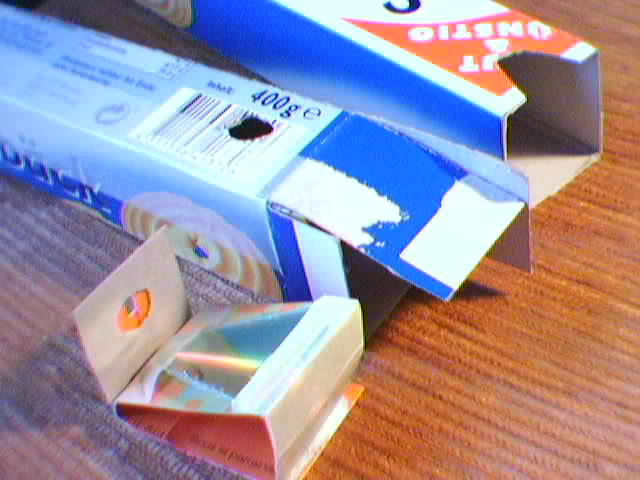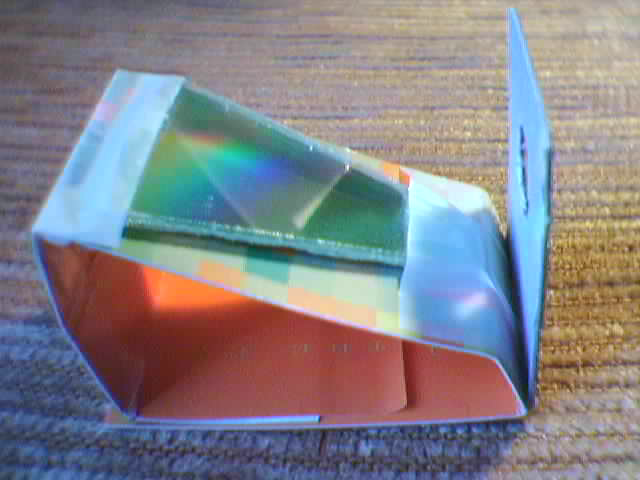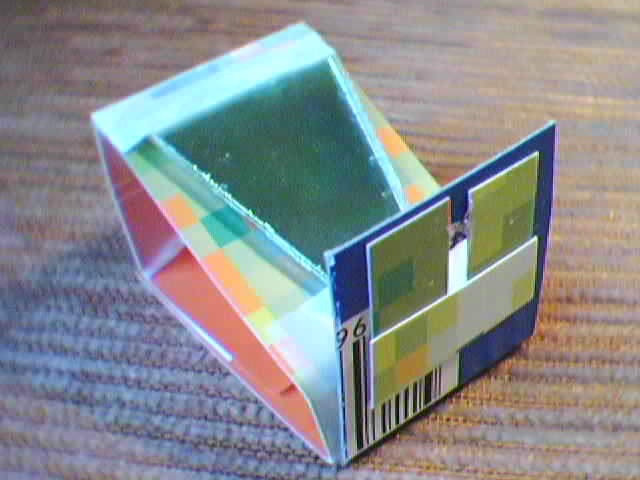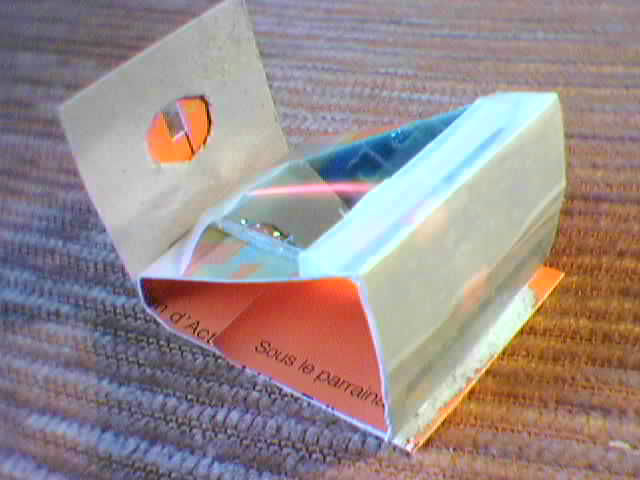
Mk VI: The double length slim version
Joachim Köppen Kiel/Strasbourg/Illkirch Spring 2007
This is a further improvement of the slim side-looking Mk V spectroscope. It exploits a simple trick to ensure that the light rays arrive at the CDROM in nearly parallel fashion, by making the distance between the entrance slit and the CDROM even longer. This improves the image quality by reducing the spread of the angles of the outgoing rays of any given wavelength. Thus the lines are less washed out.
From one cookie cardboard boxe of 7.5 by 7.5 by 25 cm, cut up lengthwise in two halves, each of which can be glued together to form a long and thin box (3.8 by 3.8 by 25 cm). However, we make one of these slender boxes a bit narrower, so that it can be slit easily into the other:

The outer box (top) will receive the entrance slit, as is done in the Mk V version; as the inner box (middle) will carry the CDROM, it has the viewing aperture, and thus we'll make a cutting in the corresponding wall of the outer box, so that we can peep through the viewing aperture even when the two boxes a fully slit into each other.
The cardboard (about 3.5 cm wide) which carries the CDROM (bottom), can be made in a somewhat more sophisticated form:

Again, the angle of the sloping part of the holder determines which spectral order will be seen, and should be tried out to suit your needs. But as the picture shows, it is about 30° or less. But we also add a vertical cardboard strip with a hole which serves as a baffle against straylight reflected from the inner walls of the boxes. The hole allows the CDROM to receive light coming only directly from the entrance slit. Since it must be at the proper position as well as have the proper size, the best thing is to make the hole larger than necessary and then block this hole partially by glueing small cardboard strips at the suitable positions which we simply find out by experiment. The image below gives an impression that the final size of the baffle hole is only a few mm -- the CDROM receives light only from this narrow beam:


I assembled the CDROM holder, with the CDROM held by sticky tape (applied on its 'upper' surface only ...), so that I could slide it in and out of the inner spectroscope box to adjust the angle of the CDROM (by bending the vertical part of the cardboard triangle -- cardboard is fortunately flexible!) as well as making the baffle aperture.
The remaining details of the construction are the same as in the Mk V model.
For its use, one slides the inner box out of th outer one to any distance that you find best for viewing. The longer distance from entrance slit to the CDROM has another advantage: For the same slit width the angle under which the slit is seen by the CDROM is smaller, and thus the spectral resolving power is somewhat better.
With this instrument one can resolve the sodium doublet in the second order spectrum of bright sunlight (not necessarily direct sunlight), and I have the impression that I can resolve it even in first order! Here is a collage of the various orders of the spectrum of a tungsten lamp -- please note that all spectral 'features' are merely artefacts of the simple Webcam ...

From right to left, we see the first order separately, the second order overlapping with the third order, and we can just see a bit of the blue and green part of the fourth order. To take this panorama, one has to orient the camera at different angles, but one may need also to adjust the spectroscope's orientation so that the particular order receives the maximum amount of light -- or simply look at a large brightly-lit surface, like a piece of white paper or a white wall.